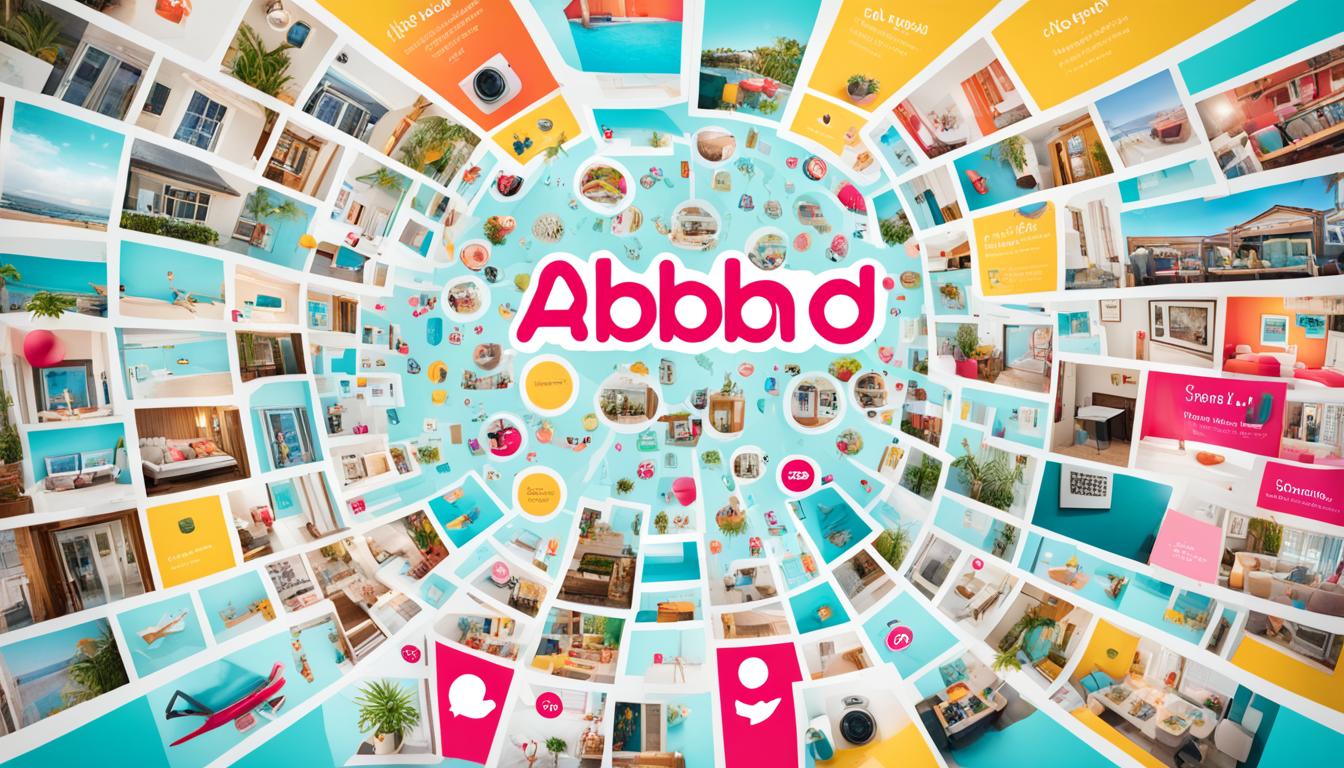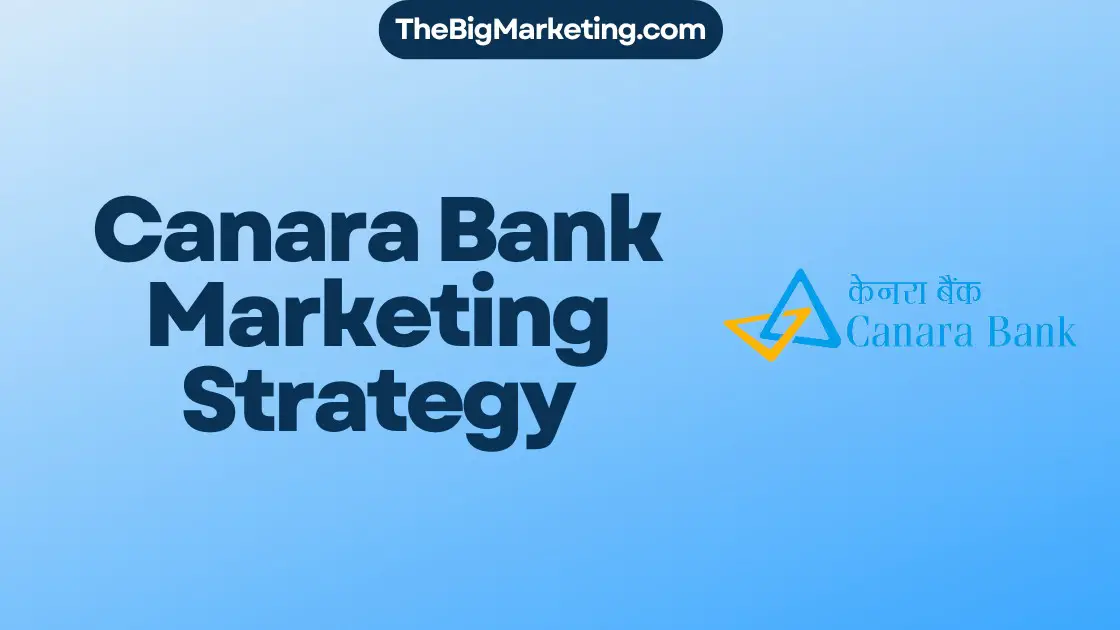PepsiCo, a leader in the food and beverage industry, has successfully implemented a dynamic and innovative branding strategy that has propelled the company to new heights. Through a combination of clever marketing tactics, strategic positioning, and a commitment to engaging with consumers, PepsiCo has solidified its brand identity and maintained its relevance in an ever-evolving market.
Understanding Consumer-Centricity and Brand Positioning
PepsiCo’s marketing approach has focused on understanding and catering to the needs and preferences of its target audience. By conducting in-depth consumer research and analyzing market trends, PepsiCo has been able to position its brand effectively to resonate with consumers. The company’s campaigns and advertisements aim to evoke positive emotions and create a sense of connection with the consumer, ultimately influencing their purchasing decisions.
One of the most notable examples of PepsiCo’s successful brand positioning is the “Is Pepsi OK?” campaign. This campaign not only addressed a consumer concern but also showcased Pepsi’s commitment to customer satisfaction. Following the campaign, Pepsi reported a 4% increase in sales, indicating a positive impact on consumer behavior.
Pepsi’s marketing initiatives extend beyond traditional channels, with a strong emphasis on digital platforms and social media engagement. The viral success of Pepsi’s Super Bowl ad, garnering over 100 million views, exemplifies the reach and engagement achieved through online marketing. Additionally, brand sentiment on social media notably shifted towards positivity after the campaign, signaling an improvement in consumer perception.
Key Takeaways:
- Pepsi’s branding strategy focuses on consumer-centric marketing and brand positioning.
- The “Is Pepsi OK?” campaign showcased Pepsi’s commitment to customer satisfaction.
- Pepsi’s digital marketing efforts have resulted in viral success and improved consumer sentiment on social media.
Emphasizing Innovation and Product Development
PepsiCo is renowned for its constant innovation and product development, catering to changing consumer preferences and trends. The company’s commitment to offering a wide range of options has allowed it to maintain its market share and appeal to diverse consumer segments. Pepsi Next, launched in the US market in 2012 and later expanded internationally, is a prime example of PepsiCo’s ability to introduce new products that meet evolving consumer demands.
Diet soft drinks have seen a significant surge in popularity, reflecting changing consumer preferences towards healthier options. PepsiCo recognized this trend and capitalized on it by developing Pepsi Zero Sugar as a rebrand of Pepsi Max. This decision, aimed at avoiding consumer confusion, demonstrates Pepsi’s dedication to adapting to consumer needs and ensuring clear product positioning.
Key Takeaways:
- PepsiCo’s focus on innovation and product development allows it to adapt to changing consumer preferences.
- The introduction of Pepsi Next and the rebranding of Pepsi Max to Pepsi Zero Sugar reflect Pepsi’s commitment to offering a diverse range of options.
- Pepsi’s ability to capitalize on the rise of diet soft drinks demonstrates its agility in responding to consumer trends.
Global Reach and Market Segmentation
With its extensive portfolio of brands, PepsiCo caters to a wide range of consumer segments and demographics. The company’s global reach and market presence enable it to tailor its marketing efforts to suit different regions and cultures successfully. PepsiCo’s international markets contribute to almost 50% of its total revenues, highlighting the company’s ability to connect with diverse audiences worldwide.
PepsiCo’s successful partnerships and collaborations further extend its brand reach. For example, the “Planet Pepsi” party, featuring Travis Scott, was live-streamed online, expanding the campaign’s reach beyond the physical event and into homes across the country. Additionally, restaurant partnerships in Atlanta boosted the campaign’s impact through special promotions and giveaways, engaging consumers beyond digital platforms.
Key Takeaways:
- PepsiCo’s diverse portfolio allows it to cater to various consumer segments worldwide.
- The company’s global presence enables tailored marketing efforts for different regions and cultures.
- Partnerships and collaborations enhance Pepsi’s brand reach and engagement with consumers.
In the next sections, we will delve deeper into PepsiCo’s branding initiatives, examining the impact of its logo redesign, the role of marketing channels in reaching consumers effectively, and the power of traditional and digital marketing strategies. Stay tuned for valuable insights and case studies that will showcase PepsiCo’s successful branding journey.
Conclusion
PepsiCo’s branding strategy is a testament to the company’s commitment to innovation, consumer-centric marketing, and global reach. Through strategic brand positioning, engaging campaigns, and a dedication to product development, PepsiCo has successfully maintained its place as a leader in the food and beverage industry. The company’s ability to adapt to changing consumer preferences, capitalize on emerging trends, and connect with its audience has solidified its brand reputation and ensured its continued success in the market.
Understanding Consumer-Centricity and Brand Positioning
In today’s competitive market, understanding consumer needs and preferences is essential for any successful brand. PepsiCo, with its global presence in over 200 countries, has embraced a consumer-centric approach to brand positioning. By leveraging consumer insights, PepsiCo has established a strong brand credibility and effectively segmented its target markets.
PepsiCo recognizes the power of social media platforms such as Facebook, Instagram, Twitter, and YouTube to engage with consumers and create interactive content. Through these platforms, PepsiCo not only connects with its audience but also gathers valuable consumer insights to inform its brand strategy. By staying attuned to evolving consumer preferences and incorporating trends, PepsiCo stays ahead of the curve and positions itself as a trailblazer in the food and beverage industry.
PepsiCo’s diverse product portfolio caters to a wide range of consumer segments. From iconic carbonated beverages to healthier options, snacks, and food products, PepsiCo ensures that it offers something for everyone. By understanding the needs and desires of different consumer segments, PepsiCo can develop tailored marketing campaigns and products that resonate with their target audience.
One of the key strategies employed by PepsiCo is its collaboration with influencers and endorsements. By partnering with influential individuals and celebrities, PepsiCo extends its reach and enhances its brand perception. This approach not only increases online engagement and brand loyalty but also helps PepsiCo tap into various customer niches.
PepsiCo’s commitment to digital marketing strategies has proven to be successful in increasing brand awareness and loyalty among consumers. The use of personalized ads, such as those for Bubly, resulted in a significant increase in brand awareness. Additionally, leveraging YouTube’s Director Mix allowed PepsiCo to create personalized video content tailored to individual preferences, further enhancing its marketing efforts.
Through its in-house consumer insights engine, powered by Google’s Ads Data Hub, PepsiCo has replaced traditional research methods like focus groups. This advanced engine enables PepsiCo to gather accurate consumer insights, identify emerging trends, and make informed decisions. The insights collected through this platform have led to successful product launches, such as the relaunch of Crystal Pepsi and the creation of Maker Overnight Oats and flavored water products.
PepsiCo’s relentless pursuit of current marketing trends and its ability to adapt to changing consumer preferences enable the company to remain relevant and future-proof in the dynamic business landscape. The brand’s dedication to consumer-centricity and its focus on understanding consumer needs through innovative marketing strategies solidify its position as a leader in the food and beverage industry.
Emphasizing Innovation and Product Development
PepsiCo, a global leader in the beverage industry, understands the importance of staying at the forefront of product innovation. With a rich history dating back to 1893, when Caleb Davis Bradham created the formula for Pepsi in North Carolina, the company has constantly adapted to meet consumer demands and preferences.
PepsiCo recognizes that consumers are increasingly seeking new and exciting flavors. To address this, the company regularly introduces new flavors to its product lineup, providing a wide range of options to cater to diverse tastes. By launching Pepsi new flavors, the company ensures that it remains relevant and captures the attention of consumers who are constantly looking for something unique.
In addition to introducing new flavors, PepsiCo also invests in packaging innovation. The company understands that packaging plays a crucial role in attracting consumers and enhancing their overall experience. By exploring new packaging options, PepsiCo aims to create packaging solutions that are not only convenient but also visually appealing and environmentally sustainable. Pepsi packaging innovation reflects the company’s commitment to meeting consumer demands while also promoting sustainability.
PepsiCo’s focus on innovation and product development is driven by its determination to meet consumer demands. By continuously adapting and evolving, PepsiCo ensures that its products remain relevant and appealing in a constantly changing market. The company’s comprehensive approach to innovation allows it to cater to a wide range of consumer segments, both globally and locally. PepsiCo’s efforts in product development have enabled the company to maintain its position as a leader in the beverage industry.
PepsiCo’s Product Innovations
| Year | Innovation |
|---|---|
| 1984 | Airing the first celebrity ad featuring Michael Jackson |
| 1992 | Launch of Crystal Pepsi |
| 2015 | Sponsorship of the NBA |
| 2022 | Celebration of the 30th Anniversary of Crystal Pepsi |
PepsiCo’s commitment to innovation is evident not only in its product offerings but also in its marketing strategies. The company leverages both celebrities and strong branding efforts to promote its products and communicate with consumers effectively. This combination of product innovation and strategic marketing has been instrumental in PepsiCo’s success in expanding its market reach.
As PepsiCo operates in over 200 countries globally, it recognizes the importance of adapting its marketing strategies to diverse cultural nuances. This global reach enables the company to introduce localized products that cater to specific preferences. For example, PepsiCo has introduced tea-infused drinks in tea-loving countries, tailoring its offerings to meet local demands.
In conclusion, PepsiCo’s emphasis on innovation and product development has propelled the company to the forefront of the beverage industry. By introducing new flavors, exploring packaging innovations, and adapting its marketing strategies, PepsiCo remains responsive to consumer demands. As the company continues to prioritize innovation, it will undoubtedly continue to meet the evolving needs and preferences of consumers worldwide.
Global Reach and Market Segmentation
PepsiCo’s marketing strategy is built on its extensive global reach and a comprehensive understanding of diverse consumer needs. With a presence in over 200 countries, PepsiCo effectively connects with consumers across different cultures and regions, allowing the company to deliver tailored products and marketing initiatives on a global scale.
Through its diverse brand portfolio, PepsiCo maximizes its market presence by owning popular beverage brands like Pepsi and Mountain Dew, as well as beloved snack brands such as Lay’s and Doritos. This diverse portfolio ensures that PepsiCo can cater to various consumer preferences and effectively engage with different demographic groups.
Market segmentation plays a crucial role in PepsiCo’s marketing approach. By strategically segmenting the market based on demographics, income levels, and cultural nuances, PepsiCo can tailor its marketing strategies and product offerings to resonate with specific consumer groups. This targeted approach allows PepsiCo to connect with consumers on a deeper level and enhance their brand experience.
PepsiCo’s global reach also extends to its digital marketing efforts. Through optimized online content and social media engagement, PepsiCo has successfully increased brand loyalty and online engagement. The company leverages SEO practices to enhance brand credibility and trust, ensuring high visibility on search engine results pages (SERPs).
Furthermore, personalized and segmented email campaigns have proven to be highly effective in driving engagement and sales. With a 26% increase in open rates and a staggering 760% increase in email revenue, PepsiCo understands the power of personalized communication in fostering meaningful connections with consumers.
In a competitive landscape that includes regional players like Nongfu Spring in China and Bisleri in India, PepsiCo remains a market leader by continuously innovating its marketing strategies. By sponsoring major sporting events like the UEFA Champions League, PepsiCo not only creates global brand awareness but also resonates with local audiences in different markets.
With a strong emphasis on understanding consumer needs, PepsiCo’s global reach, market segmentation, and diverse brand portfolio have placed the company at the forefront of the beverage industry. As it continues to adapt its marketing strategies and cater to regional preferences, PepsiCo seeks to drive sales success while delivering satisfying experiences to consumers worldwide.
| Statistics | |
|---|---|
| PepsiCo’s net revenue in 2022 | $86.39 billion |
| Projected value of the global beverage industry by 2028 | $524.20 billion |
| Pepsi’s net revenue from international markets in 2022 | 40% |
| Number of countries Pepsi is distributed in globally | Over 200 |
| The net revenue of PepsiCo in 2020 | Over $70 billion |
The Power of Visual Identity: Pepsi’s Logo Redesign
PepsiCo’s logo has undergone several transformations throughout its history, reflecting the brand’s commitment to innovation and staying relevant. One of the most significant redesigns occurred in 2023 when Pepsi unveiled its new visual identity. This redesign marked the brand’s first major global update in fourteen years, signaling a new era for Pepsi in 2024 and beyond.
The new Pepsi logo pays homage to its past while embracing a modern aesthetic. Inspired by the iconic logos from the 1970s to the 1990s, the redesign evokes a sense of nostalgia among long-time Pepsi enthusiasts. The incorporation of bold electric blue and black colors adds a contemporary touch, capturing the brand’s commitment to embracing the unexpected and driving culture forward.
The new Pepsi logo showcases the brand’s focus on zero-sugar offerings, incorporating the color black to symbolize Pepsi Zero Sugar. This updated visual identity resonates with consumers who value healthier options, while still appreciating the classic taste of Pepsi.
A brand’s visual identity plays a pivotal role in creating brand recognition and fostering brand loyalty. The logo, colors, typography, and symbols used all contribute to how consumers perceive and connect with a brand. Pepsi’s historical logo transformations and the recent redesign demonstrate the brand’s commitment to maintaining relevance and appealing to diverse audiences.
One of the key elements of Pepsi’s visual identity is its use of the red, white, and blue color scheme, which aligns the brand with American values and evokes a sense of patriotism. This color palette, combined with the iconic Pepsi Globe symbol, creates a sense of unity and completeness, resonating with consumers worldwide. It also aids in brand recognition across different marketing channels, ensuring that the Pepsi visual identity remains distinctive and memorable.
The typography used in Pepsi’s logos has also evolved over the years. Earlier logos featured variations of serif and cursive lettering, conveying a sense of friendliness and approachability. In contrast, the current logo adopts a bold uppercase sans-serif font, exuding a more modern and sophisticated aesthetic. These strategic typography choices further enhance Pepsi’s visual communication strategy by connecting with diverse audiences and conveying the brand’s values.
Behind the scenes, a designated graphic design company plays a crucial role in ensuring consistency in Pepsi’s branding materials. This consistency ensures that Pepsi’s visual identity remains cohesive across various platforms, contributing to brand recognition and building consumer trust. By partnering with expert designers, Pepsi can adapt to design trends effectively, creating logos that appeal to contemporary tastes while maintaining the brand’s timeless essence.
The power of visual identity should not be underestimated, as bold colors, legible typography, and iconic symbols can greatly influence a brand’s perception and communication. Pepsi’s logo redesign exemplifies the brand’s commitment to staying relevant, connecting with consumers, and driving its global presence forward.
Designing with Purpose: Lessons from Pepsi’s Logo Redesign
Pepsi’s logo redesign process offers valuable lessons in designing with purpose. The brand listened to its audience and embraced their insights, incorporating the elements that consumers associated with the Pepsi brand. By involving consumers in the design decisions, Pepsi ensured that the logo resonated with its target audience.
The redesign process began by considering the Pepsi brand story and its rich history dating back to its founding in 1898. The first Pepsi logo, trademarked in 1903, laid the foundation for subsequent iterations. Over the years, Pepsi made strategic design decisions to stay relevant and competitive in the cola soda industry.
One significant change occurred in 1905 when the logo was updated with thicker type and removed edges for better legibility. This adjustment showcased Pepsi’s commitment to legibility and readability, enabling consumers to easily identify the brand.
In 1962, the word “Cola” was removed from the logo, simplifying the design and setting the stage for a bold and iconic visual identity. This change represented Pepsi’s evolution and its aspiration to become more than just a cola brand.
Throughout its logo redesign journey, Pepsi remained aware of its direct competitor, Coca-Cola. While both brands utilize red in their logos, Pepsi added blue and incorporated the iconic globe, distinguishing itself and communicating a sense of global presence.
The design decisions made by Pepsi were not arbitrary but rooted in its branding strategy. Pepsi aimed to stand out from Coca-Cola and position itself as a youthful, vibrant, and innovative brand. The Globe logo design represents the brand’s values and creates a distinct visual identity.
Pepsi’s logo redesign process also highlights the importance of consumer input. Involving consumers in the decision-making process allows the brand to connect with its target audience on a more personal level. It creates a sense of ownership and loyalty among consumers, enhancing brand engagement and recognition.
Telling a brand’s story through visuals is crucial for setting it apart from competitors and creating an emotional connection with customers. The evolution of the Pepsi logo showcases the brand’s adaptability and innovation, staying true to its core values while embracing design trends of each era.
Lessons Learned from Pepsi’s Logo Redesign
- Consumer input is invaluable in creating a logo that resonates with the target audience.
- Consider the brand’s story and history when redesigning a logo to maintain brand continuity.
- Stay aware of competitors and find ways to differentiate the brand visually.
- Design with purpose, incorporating elements that reflect the brand’s values and objectives.
- Involve consumers in the design decisions to enhance brand engagement and loyalty.
By carefully considering consumer input, staying true to its brand story, and designing with purpose, Pepsi successfully executed its logo redesign process. The result is a visually appealing logo that represents the brand and resonates with its target audience.
Evaluating the Impact: Pepsi’s Logo Redesign Case Study
A case study evaluating the impact of Pepsi’s logo redesign on consumer brand equity revealed essential insights into consumer perception and the overall impact on Pepsi’s brand image. The study examined the effects of the logo update and its implications for brand equity and consumer sentiment.
Pepsi’s rich history of logo redesigns spans over 125 years, with the most recent update announced in March 2023. The redesigned logo was rolled out in August, marking a significant change in Pepsi’s visual identity. Understanding the impact of this redesign on consumer perception is essential in assessing the success of the rebranding effort.
The case study found that Pepsi’s brand momentum experienced a notable positive shift post-redesign, rising from 32.0 to 39.6 in early September 2023, representing an impressive gain of +7.6 points. This increase signified a significant boost to Pepsi’s brand equity and consumer interest in the brand.
The impact of Pepsi’s logo redesign on consumer perception extended beyond brand momentum. The study revealed a substantial increase of +6.3 in consumer interest in recommending Pepsi products, indicating a positive change in consumer sentiment and advocacy.
The results of the case study highlight the importance of visual identity in shaping consumer perception and brand equity. By investing in logo redesign and aligning it with the brand’s values and target audience, Pepsi successfully achieved a positive impact on its brand image and consumer perception.
| Statistics | Impact |
|---|---|
| Pepsi’s Brand Momentum | Rose from 32.0 to 39.6 in early September 2023 (+7.6) |
| Consumer Interest in Recommending Pepsi | Increased by +6.3 post-logo redesign |
The success of Pepsi’s logo redesign case study underscores the significance of visual identity in building brand equity and shaping consumer perception. By strategically updating its logo, Pepsi was able to rejuvenate its brand image and resonate with its target audience.
Continue reading to discover the role of marketing channels in effectively reaching consumers and maximizing brand visibility in Section 8: The Role of Marketing Channels: Reaching Consumers Effectively.
The Role of Marketing Channels: Reaching Consumers Effectively
PepsiCo understands the significance of utilizing a diverse range of marketing channels to effectively reach and engage with its target consumers. By leveraging various platforms and strategies, PepsiCo ensures that its marketing efforts align with the ever-evolving digital landscape and consumer preferences.
Digital Transformation: Expanding Reach through Social Media Engagement
Social media platforms play a vital role in PepsiCo’s marketing strategy. With a strong presence on popular platforms like Instagram, TikTok, and Facebook, PepsiCo capitalizes on the opportunities these channels offer for connecting with consumers on a personal level. Through engaging content, captivating campaigns, and interactive experiences, PepsiCo fosters meaningful connections with its target audience, driving brand loyalty and advocacy.
PepsiCo’s social media engagement extends beyond organic content creation. The company strategically collaborates with influencers and celebrities, forging partnerships that amplify its message and extend brand reach. Collaborations with well-known figures help cultivate authenticity and trust among consumers, enticing them to engage with PepsiCo’s products and initiatives.
Driving Brand Perception through Influencer Collaborations
Influencer collaborations have become an integral part of PepsiCo’s marketing strategy, serving as powerful drivers for increasing brand visibility and credibility. By partnering with influencers across various niches, PepsiCo taps into specific target markets and leverages their dedicated fan base. This approach enables PepsiCo to connect with consumers who align with the values and aesthetics of these influencers, making the brand more relatable and desirable.
Moreover, PepsiCo’s long-standing tradition of collaborating with celebrities has further solidified its brand recognition. From iconic figures like Michael Jackson to contemporary stars like Britney Spears and Beyoncé, these collaborations not only enhance brand appeal but also create lasting memories and emotional connections with consumers.
Environmental Consciousness: Spotlight on Sustainability Efforts
PepsiCo’s commitment to sustainability resonates strongly with consumers who prioritize environmentally conscious practices. The company implements a range of sustainability initiatives, such as reducing water consumption, minimizing carbon emissions, and promoting recycling. By highlighting these efforts across multiple marketing channels, PepsiCo reinforces its position as a socially responsible corporate entity.
Maximizing Visibility: Traditional and Digital Marketing Strategies
PepsiCo understands the importance of maximizing brand visibility to capture consumer attention and maintain a competitive edge in the beverage industry. To achieve this, PepsiCo employs a combination of traditional and digital marketing strategies, ensuring a widespread presence across various channels.
Traditional Marketing Tactics: Television Commercials
Television commercials have long been a staple in PepsiCo’s advertising expenditure. Despite the rise of digital media, PepsiCo recognizes the power of television commercials in reaching a broad audience and reinforcing brand visibility. These commercials allow PepsiCo to craft a universal message that appeals across demographics, ensuring their brand remains top-of-mind for consumers.
Digital Marketing Strategies: Engaging with Consumers Online
As online platforms continue to dominate consumer engagement, PepsiCo invests heavily in digital marketing. By focusing on platforms frequented by their target audiences, PepsiCo effectively engages with consumers online. Through social media engagement, online promotions, and interactive campaigns, PepsiCo creates meaningful connections with their audience, driving online engagement and brand loyalty.
In-Store Promotions: Reinforcing Brand Visibility
In-store promotions play a crucial role in introducing new customers to PepsiCo products and reinforcing brand visibility among existing customers. These promotions often involve eye-catching displays, special discounts, or interactive experiences that grab consumers’ attention and encourage them to try PepsiCo’s range of beverages. By strategically positioning their products in stores, PepsiCo ensures that their brand remains visible and accessible to consumers.
By utilizing a combination of traditional and digital marketing strategies, including television commercials, online engagement, and in-store promotions, PepsiCo maximizes brand visibility. This multi-faceted approach allows PepsiCo to reach a wide audience, engage with consumers across various platforms, and reinforce their brand presence in the market.
Conclusion
Pepsi’s marketing success can be attributed to its strong branding strategy, which has resonated particularly well with the younger demographic. By focusing on consumer engagement through social media platforms, Pepsi has increased its reach and fostered brand loyalty.
The frequent use of celebrity endorsements in Pepsi’s marketing campaigns, along with its investment in influencer marketing, has further boosted consumer trust and interaction on social media. Moreover, Pepsi’s commitment to social responsibility has not only enhanced brand loyalty but also attracted consumers who value sustainability.
With a high level of customization in marketing strategies for different markets, Pepsi has achieved a significant global market penetration of 80%. By collaborating with local talent and prioritizing cultural sensitivity in its campaigns, Pepsi has effectively connected with diverse audiences worldwide.
Through its history of successful campaigns like the “Pepsi Challenge” and collaborations with iconic figures like Michael Jackson, Pepsi has consistently embraced innovation, while also connecting with the younger generations. This has contributed to Pepsi’s brand growth, evident in its annual turnover of $86.392 billion in 2022.







